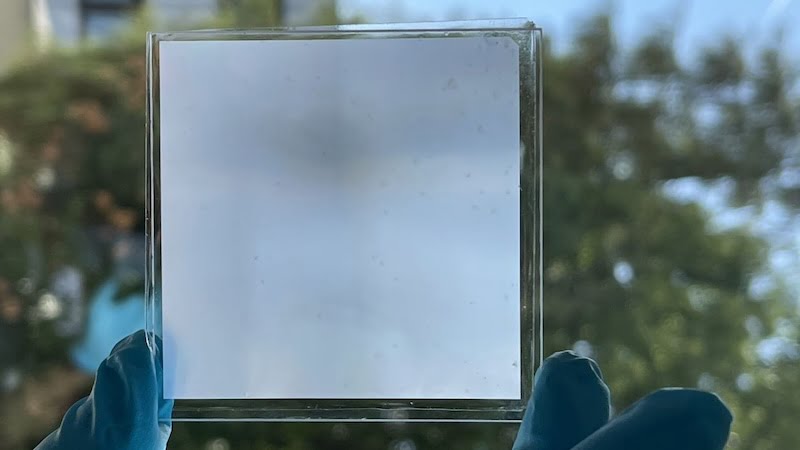
Researchers have developed a new building material with special properties: It lets sunlight through, regulates the climate in the room and can clean itself. The background
Rooms and buildings flooded with light can reduce energy costs. Until now, architects have tried to achieve this criterion through glass roofs and walls. The disadvantage: glare, lack of privacy and overheating.
Researchers at the Karlsruhe Institute of Technology (KIT) have now apparently found a solution. A new type of polymer-based building material combines various properties and could replace glass components in the construction sector in the future.
Sustainable building material cools, lets light through and does not dazzle
The so-called polymer-based micro-photonic multi-functional metamaterial (PMMM) consists of microscopically small silicon pyramids. They measure around ten micrometers, which corresponds to about a tenth of the diameter of a hair.
This gives the material several functions: light scattering, self-cleaning and radiation cooling. At the same time, it is very transparent. “One key feature is the ability to efficiently radiate heat through the long-wave infrared transmission window of the Earth's atmosphere and thus release heat into the cold expanse of the universe,” explains Bryce S. Richards, professor at KIT. “This enables passive radiation cooling without power consumption.”
The research team has already tested the new building material in the laboratory and outdoors. Using spectrophotometry, the scientists measured the light transmittance, light scattering, reflection properties, self-cleaning ability and cooling performance.
The result: cooling by six degrees Celsius compared to the ambient temperature and 95 percent transparency. In comparison, glass usually has a transparency of 91 percent. The micropyramid structure also scattered sunlight by 73 percent.
Metamaterial can clean itself
This creates a blurred appearance. In the future, interior spaces could be bright, glare-free and protected from view at the same time. The material is also suitable for greenhouses. The high light transmission increases efficiency by around nine percent and could therefore increase yields.
Another feature: unlike glass, the new building material cleans itself. The micropyramids give the PMMM film superhydrophobic properties, similar to a lotus leaf. Water rolls off in the form of drops, removing dirt and dust from the surface. This self-cleaning function is intended to make the material easy to care for and durable.
The research team wants to use the new building material to contribute to more sustainable and energy-efficient architecture. “The material can simultaneously ensure optimal use of sunlight indoors, provide passive cooling and reduce dependence on air conditioning,” explains Dr. Gan Huang, group leader at the Institute of Microstructure Technology (IMT). “The solution can be scaled and seamlessly integrated into plans for environmentally friendly house construction and urban development.”
Also interesting:
Source: https://www.basicthinking.de/blog/2024/06/09/neuartiges-baumaterial/


